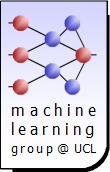Micro-Workshop submitted topics
| 1 - Improving Automated Flare Detection is 1D X-ray/UV time series |
| Solar flares are observed as sudden increases in solar X-ray, EUV, and UV emission. Their automatic detection is very important for space weather now-casting and scientific research. The most widely used flare list is the NOAA GOES event list which is compiled using very basic criteria and occasionally, manual input. These basic criteria can lead to a bias against the detection of small flares at times of high solar background and activity, inaccurate flare start and end times, and multiple closely coinciding flares to be marked as a single detection. Are there alternative mathematical and signal processing tools which can improve the detection of flares in a 1 dimensional time series such as those from GOES/XRS, PROBA2/LYRA, etc.? |
| Submitted by : Daniel Ryan |
| Comments : None |
| 2 - Detection of quasi-periodic pulsations in solar flares |
| Quasi-periodic pulsations (QPP) have been reported in the impulsive phase of several solar flares in wavelengths going from radio waves to HXR. The origin of QPPs is not well understood, but might be intrinsically linked to the flare process, and even provide insights on reconnection. It is therefore important to have trustable systematic methods to detect and assess the presence of QPPs in flares, so that statistical analysis might be led. Nevertheless, the detection of QPPs can be challenging, especially in reason of their low amplitude and of their "quasi-periodic" behavior. The detection of peaks in the FFT power spectra must take into account the red-noise characteristics of the solar time-series. Such peaks appear to rarely reach a high level of significance. The use of wavelets faces the same problem and only provides results when the data are detrended, which raises questions on the validity of the adopted procedure. Nevertheless, the reality of those oscillations is not questioned as their are observed by several instruments simultaneously. We propose a discussion on the best approach to study this phenomenon. |
| Submitted by : Marie Dominique |
| Comments : None |
| 3 - The New CORIMP Coronal Mass Ejection Catalog |
| A new coronal mass ejection catalog has been developed, called CORIMP:
http://alshamess.ifa.hawaii.edu/CORIMP
The front-end has largely been designed as a simple interactive HTML that mirrors current CME catalogs in categorizing event data by year & month: each month containing a list of detected CMEs with some indication of their "magnitude" (e.g. color-coding by CME speed and/or angular span). A list of near-realtime CME detections is also generated, important for space weather monitoring and forecasting. The catalog applies three types of numerical fitting algorithms to the CME height-time measurements across the span of relevant position angles:
1) a linear fit to approximate the speed of each event (cf. CACTus),
2) a quadratic fit to approximate the acceleration of each event (cf. SEEDS),
3) a Savitzky-Golay filter to determine the trends in speed and acceleration of each event.
The distribution of single-event kinematics across plane-of-sky position angle is used as a statistical measure of the median/max/min of CME speed/acceleration. CME mass is also determined from the automatic detections.
User feedback is very much welcomed on the catalog design. Moreover, ideas on how to approach mining/disseminating the wealth of information available from the catalog may be discussed. |
| Submitted by : Jason Byrne |
| Comments : None |
| 4 - Detecting CMEs in white-light images |
| With the data from STEREO is now possible to follow a CME from distances close to the Sun (1.4 Rs) up to heliosphere. Even if both coronagraphs and imagers record white-light corona (photons from photosphere scattered on the free electrons) other unwanted signal is present in these images (F or dust corona, scattered light in the instrument etc.). Solar community is facing still the problem in separating the CME signal from the background signal. We would like to discuss different available techniques to do this separation and eventually to improve them. Also, it is not always straightforward to follow a faint CME from coronagraph to imagers field of view. We would like to address questions like: Do we see the same things in the two instruments? Are the CMEs looking differently closer and farther away from the Sun? Can be that some CMEs develop in imagers FOV or it has to do with the instrument sensitivity?
|
| Submitted by : Vaibhav Pant |
| Comments : None |
| 5 - SunPy |
| This session will be a coding sprint on some outstanding todos for the SunPy library. It is also an excellent time to get a SunPy development environment setup and to get some SunPy developers to show you the git + GitHub workflow for contributing to the development of SunPy. |
| Submitted by : Stuart Mumford |
| Comments : None |






